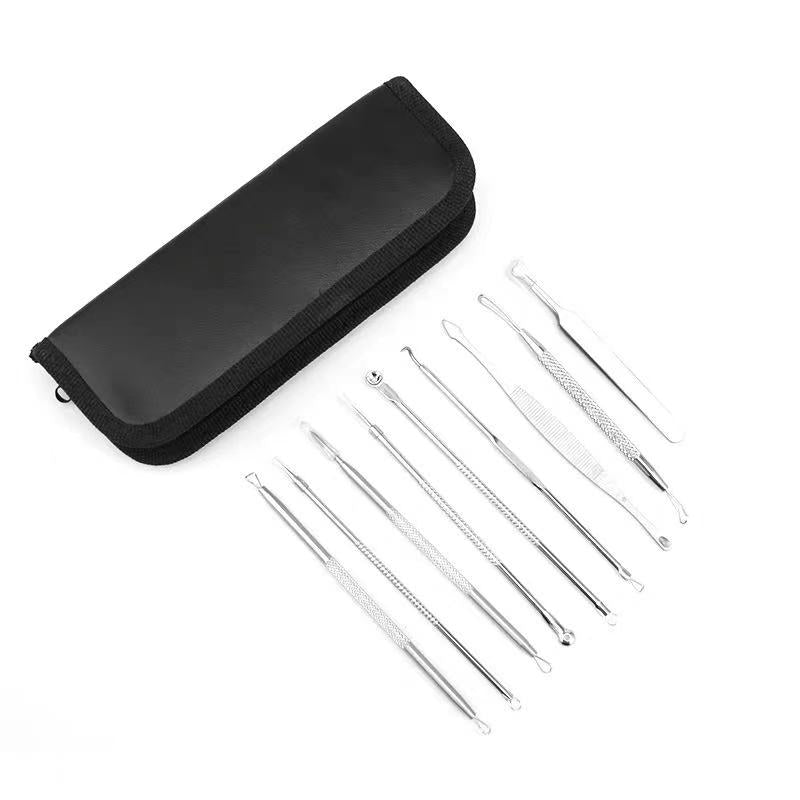

- #Blackhead extractor tool worse how to
- #Blackhead extractor tool worse skin
- #Blackhead extractor tool worse pro

These debris turn a black or grey color when exposed to oxygen, hence the name “blackheads”.
#Blackhead extractor tool worse skin
Blackheads are some of the most common types of comedones, and are referred to as “open comedones”.īlackheads are caused by debris, such as bacteria, dirt, dead skin cells, sebum, and sweat, that clogs the pores. A blackhead is a type of comedo, a small bump found on the skin.

What Are Blackheads?īlackheads are a mild form of acne that can occur on the face and the body.
#Blackhead extractor tool worse how to
If you are interested in using a tool to get rid of your blackheads, read on to learn more about the best blackhead extractor tool and how to use them. Many people will suffer from blackheads, and blackhead remover tools are frequently relied on. “Microdermabrasion is a gentle exfoliating treatment that often involves a little pen or wand that acts like a mini sandblaster and vacuum cleaner in one.Blackheads are incredibly common – and incredibly annoying. “It’s safest to see a well-trained aesthetician or dermatologist who can perform in-office extractions or microdermabrasion,” says Geraghty. “If it’s a struggle to get blackheads out and you’re not getting results, then definitely see a pro,” says Rouleau.
#Blackhead extractor tool worse pro
Sometimes it’s best to let a pro handle it. “This is a great way to keep pores clean without overly stripping your skin of moisture,” says Robinson. If you struggle with constant blackheads, Gohara recommends trying a HydraFacial, which pairs gentle suction to remove trapped debris and then infuses skin with moisture-think of it as an amped-up facial. Geraghty points out that deep cysts or milia can masquerade as blackheads, and both necessitate a visit to the dermatologist since both require more than a simple extraction. There’s also, of course, the chance that what you think is a blackhead might not actually be a blackhead at all. You can just come back to it another day. “Meaning, if it doesn’t come out after three tries, don’t do it any longer or you’ll risk damaging your skin or potentially breaking a capillary.” If it’s not coming out, that means it’s not the time to remove it. “My general rule is three strikes and you’re out,” says Rouleau. But if one of those dark blackheads doesn’t pop, take a deep breath and let it be. You should really only be targeting the darkest, more obvious blackheads from the start. Learn when to let go of a stubborn blackhead. If the blackhead does not release easily, do not continue to attempt the extraction.” “Apply slow and even pressure, and once you are able, lightly pinch the tweezers and pull the blacked out material from the skin to extract it.

“Gently press on each side of the blackhead until it begins to release,” she says. Rouleau says to keep the tweezer body perpendicular to where you’re extracting, and keep the curved part of the tips on your skin. To use it correctly, place the open tips on each side of the blackhead. Better yet, use an extractor tool.Īn extractor tool is used in-office by most aestheticians, so if you’re trying to closely replicate your favorite facial, it’s your best bet. Do not use your nails, lest you puncture your skin. “For example, position fingers at three o’clock and nine o’clock, and then five o’clock and ten o’clock, then two o’clock and seven o’clock,” she says. While squeezing, relocate your fingers to make it easier and to avoid creating marks. “Widen them out a bit so that the blackhead will be extracted more easily from a deeper level within your skin,” says Rouleau. Here’s a primer: Start with completely clean hands and remember not to place your fingers too close to the blackhead.


 0 kommentar(er)
0 kommentar(er)
